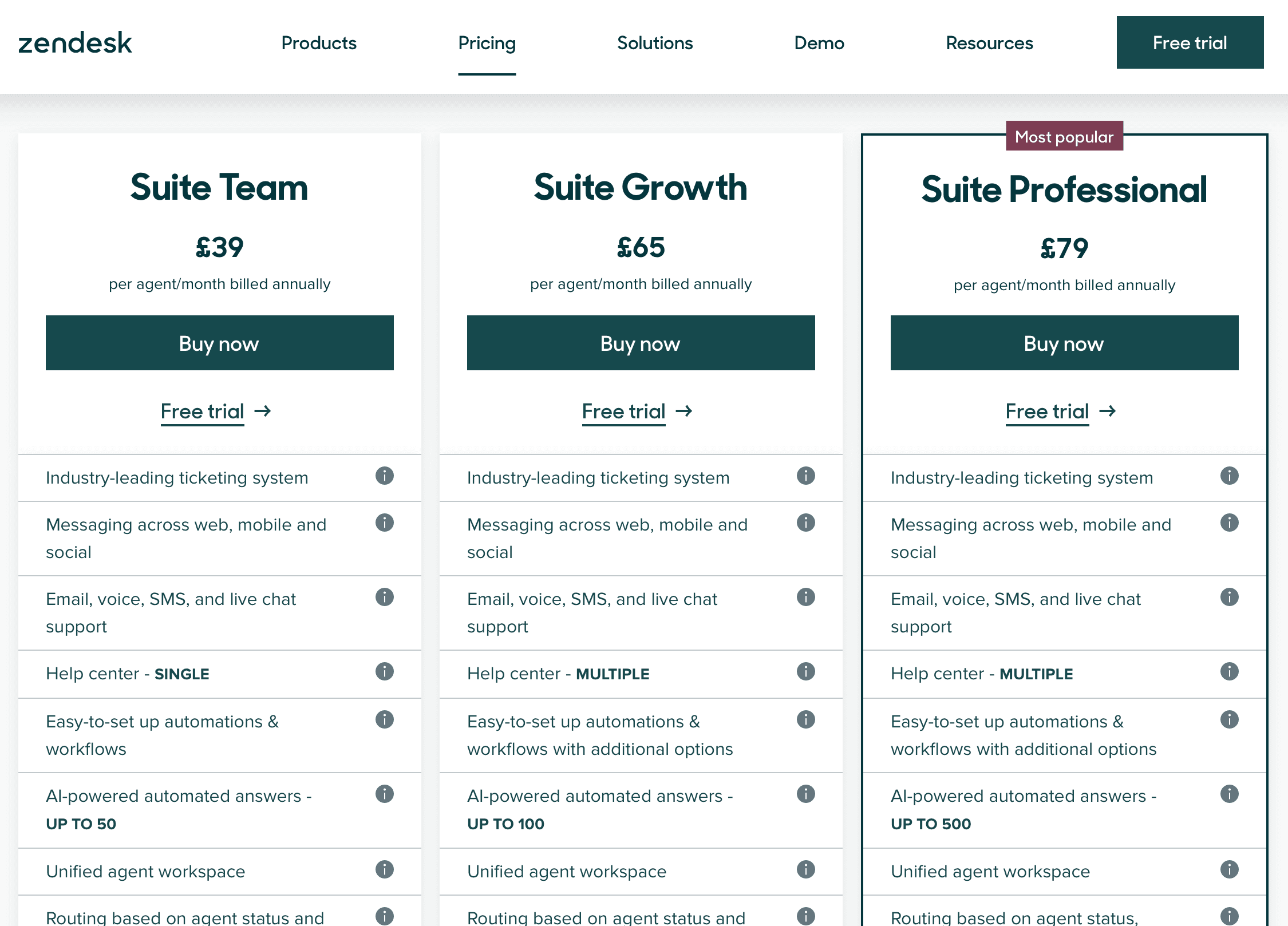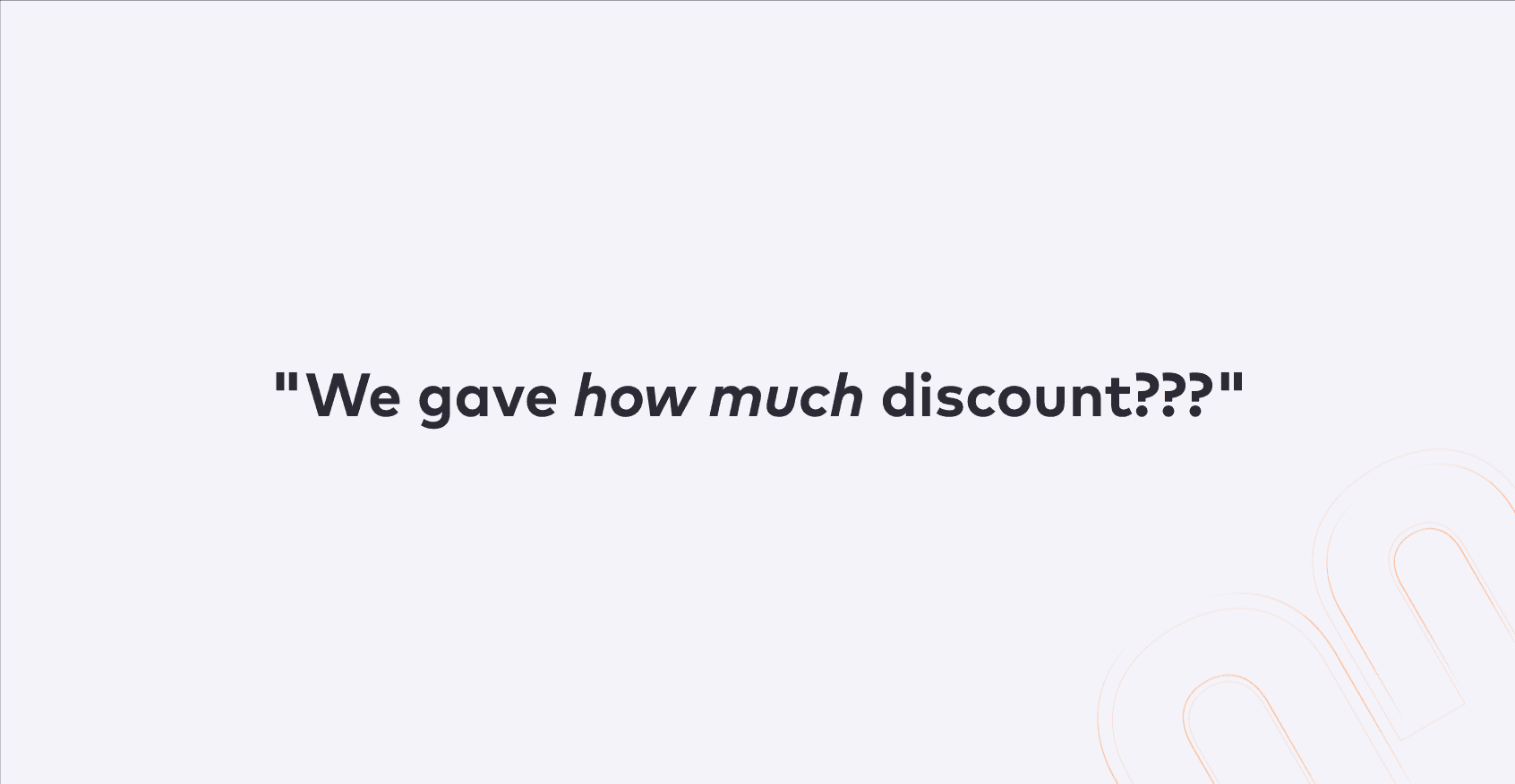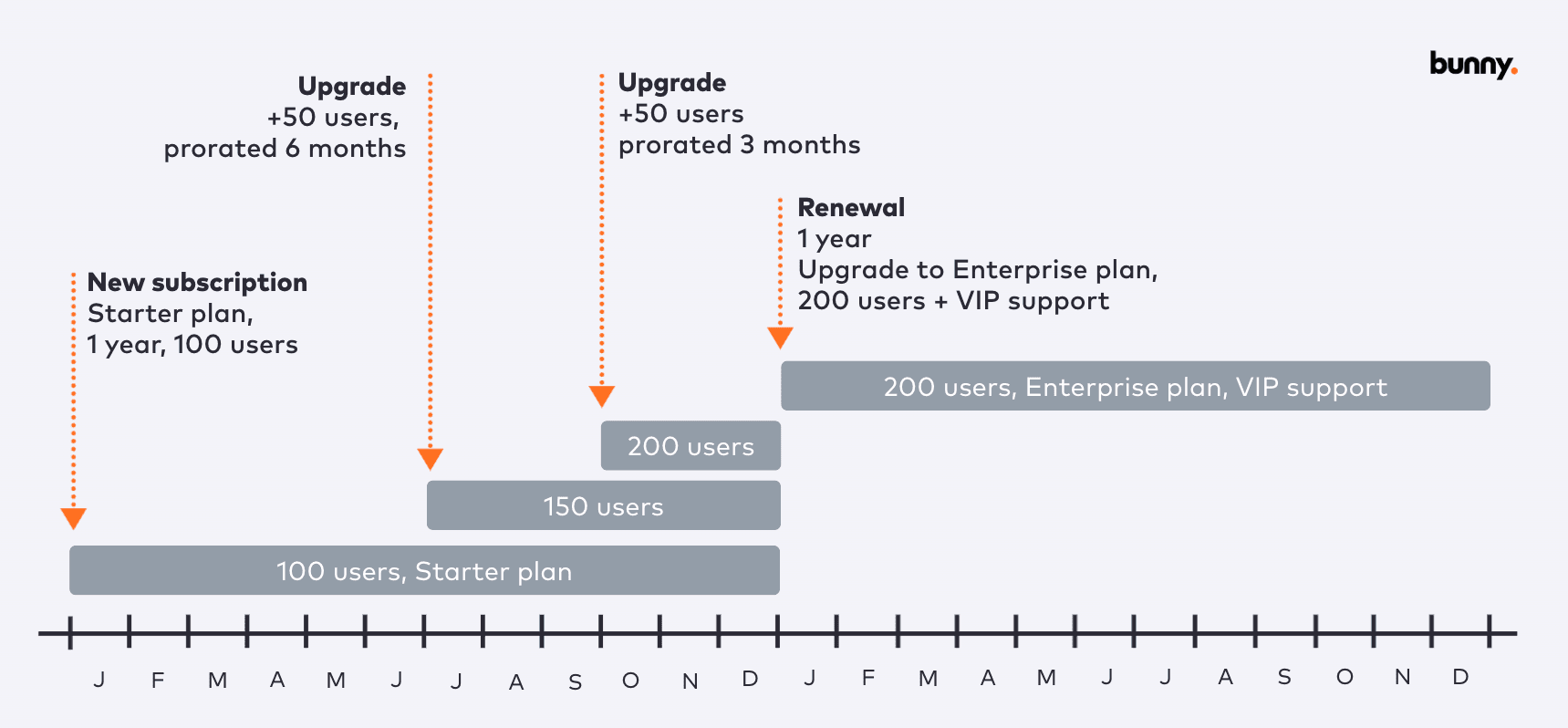
Are your SaaS customers getting the features they paid for?

Ask any thriving SaaS company how they ensure that what a client buys is available in their account and you’ll certainly see eyes roll. This problem is widespread throughout the SaaS industry, and leads to unhappy customers. Users expect to have immediate access to what they have purchased, and failures in provisioning prevent this from happening.
In this post we will cover how Bunny’s SaaS tenant provisioning feature increases customer satisfaction, reduces churn, and can increase revenue.
What are subscription entitlements?
Most SaaS companies offer multiple plans, usually small, medium and large. The features of these plans usually build on one another and pricing increases accordingly.
When you subscribe to a plan, you are entitled to its features. Your tenant, sometimes called an instance, should reflect that and be provisioned accordingly. This is often not the case.
For example, Zendesk has named their small, medium, and large plans: Suite Team, Suite Growth, and Suite Professional. If you subscribe to the Suite Team plan you get a single help center and up to 50 AI powered automated answers. However, if you subscribe to Suite Professional you’ll get multiple help centers and up to 500 AI powered automated answers.

The challenge for SaaS companies is making sure that the features that a subscriber is entitled to are enabled or activated on the platform. Failing to get it right will result in low customer satisfaction and potentially missed upgrade opportunities or churn.
What is SaaS tenant provisioning?
SaaS tenant provisioning refers to the process of creating and configuring a tenant for a Software as a Service (SaaS) application. A tenant is a logical isolation of a SaaS application, and can be thought of as a separate instance of the application that is used by a single customer or organization. When a new tenant is created, the SaaS provider must allocate resources and configure the tenant with the appropriate usage limits, features, and data to meet the terms of the subscription.
Tenant provisioning is usually automated and most self service SaaS products have their initial tenant configured correctly based on the plan that was selected during signup. This is likely the first and last time the tenant will be in sync with the subscription due to upgrades and plan changes that occur during the customer lifecycle.
Are your customers getting what they paid for?
All successful SaaS companies have a similar customer lifecycle that will involve an initial sign up followed by multiple upgrades and upsells to additional products or features. These changes to a customers subscription often occur frequently with increases to user quantities as they scale or requirements for new power user level features and upgrades.
With all of the changes to a customer subscription the provisioning of those subscription changes start to fall through the cracks. With your sales and account management teams pushing hard for the next deal it is easy to see why they may forget to switch on one feature or another after the deal is closed.
This leads to what we call a breach in subscription compliance and as mentioned previously, can result in frustrated customers and possibly churn.
In some cases it may be that the customer doesn’t know that your product has a certain feature they need because it was never turned on for them. They may start looking around at competitors that can fill that need and this all started because of mistakes in provisioning.
Alternatively you may have subscriptions that have downgraded their feature and usage limits but continued to enjoy their previous plan because the downgrade was never completed properly on their tenant.
The reason why many SaaS companies struggle to maintain a sync between what is sold and what is delivered is because the sales or quoting system is not linked to the technical side which manages the tenants. This means that automation is hard to achieve and in most cases upgrades or plan changes are performed manually.
How can Bunny help?
Bunny provides a complete quoting, billing and subscription management platform for both sales-led and product-led SaaS companies. Bunny is the single source of truth for your entire product catalog and all associated features, usage limits and relevant charges.
Building upon the product catalog Bunny then lets you create subscriptions for self-service sign-ups or sales-led deals. Every subscription that is created is linked to a tenant that represents the entitlements of a tenant in your SaaS application.
Then through the use of a developer integration, Bunny is able to push the subscribed feature set to the SaaS application which can then unlock or restrict the appropriate features and limits.
Bunny’s tenant provisioning can be automated to happen as soon as a new quote is accepted and a subscription is changed or it can be scheduled for a future date. If increased limits or new features should not come into effect until next quarter or some other predetermined date then Bunny will hold back those features until the time is right.
The benefit of having your subscription management and provisioning handled by the same system is obvious. There is no longer a chance for human error or subscription compliance problems, you get warnings when tenants need to be provisioned and you have a history of provisioning changes so you can see exactly when feature X got deployed to customer Y.

